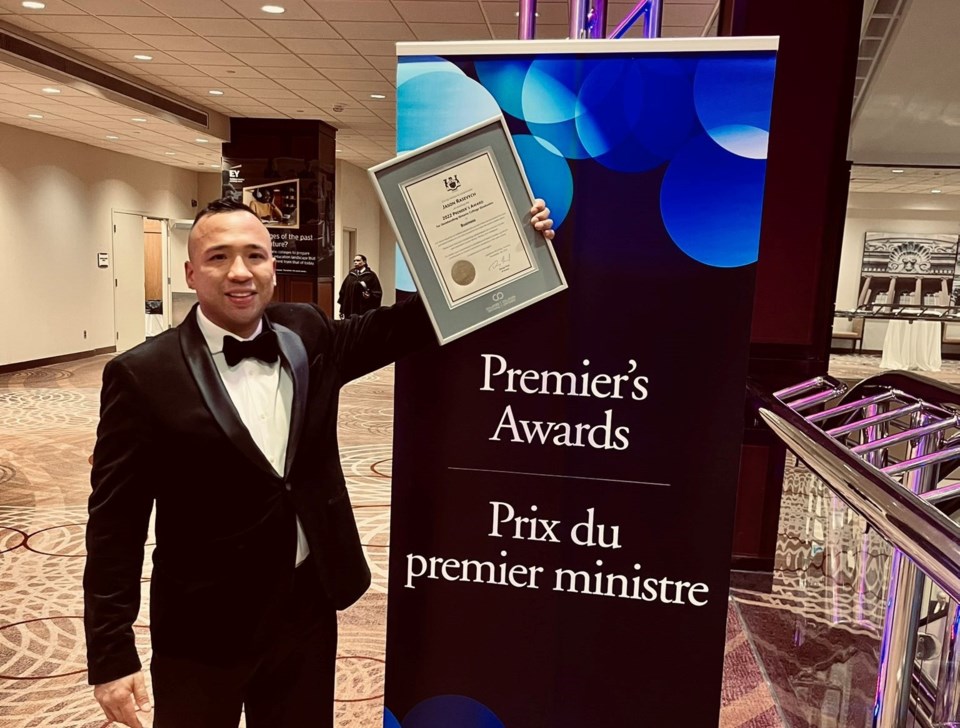THUNDER BAY — Well known as a negotiator, business advisor, Indigenous business ambassador and entrepreneur, Jason Rasevych can now add ivy-league scholar to his resume.
President and founder of the Anishnawbe Business Professional Association (ABPA), Rasevych is one of 52 Canadians who have been accepted into the competitive seventh cohort of the Harvard Business School executive education certificate program. The Leading People and Investing to Build Sustainable Communities program was delivered in partnership with the Aboriginal Financial Officers Association of Canada at Harvard University in Boston, Mass., last week.
Rasevych said he is "grateful and humbled" to be selected as one of the Indigenous leaders for the Harvard program, which he called "prestigious." He said the timing of it is important because of the opportunities in Canada across different sectors for increasing Indigenous participation, equity and ownership in major projects.
"It's exciting professional development. I am here with Harvard's elite professors and 50-plus Indigenous leaders from not just Canada, but from the United States, some from the Maori delegations and Australia," he said, adding that their day begins at 6:30 a.m. and goes to 8 p.m. with the discussion groups.
"There's a big learning component. We're talking about how we can support new ways of economic development and investments into Indigenous communities and looking at mergers, acquisitions and major financial strategies tabled by the Harvard professors and mixing it with the Indigenous knowledge of the leaders here."
Rasevych, a Ginoogaming First Nation member, says he focused on addressing the significant infrastructure gap, estimated at $350 billion, and maximizing the potential of $600 billion in resource development projects on First Nations lands in Canada.
A report led by the Assembly of First Nations last year outlined an estimate of what it would cost to close the infrastructure gap across 633 First Nations from coast to coast, he said.
Rasevych said housing was a big proportion of the need for new development, retrofitting existing households and the system to do so.
"There are also transportation infrastructure, roads, potential for transmission corridor development for communities to get them off of diesel generators and looking at alternative sources of energy and broadband fibre optics to close the digital divide," he said.
He added it does not include enabling infrastructure for industries if there are potential rail opportunities or other types of port development that communities could get to outside of their community. This focused mainly on the community-level infrastructure.
Another $600 billion investment is required to start and build projects that have been identified across Canada in natural resources. These involve critical minerals, forestry development and how communities could participate in forest management and fibre usage, oil and gas sectors and infrastructure development.
"These are projects we're seeing a lot of communities out west in B.C. develop like major LNG projects that export that product to countries overseas and help to diversify Canada's international trade now being led by Indigenous leaders and communities," he said.
"That is why it's been identified as a significant importance. Those projects are going to require social licence from Indigenous peoples, and that's going to require equity participation and other types of decision-making structures for First Nations to participate in the boardroom to design and co-ordinate how those projects are to be planned, constructed and maintained."
Between the infrastructure gap and resource development projects, he said there's almost a trillion dollars there, worth of potential for Canada by working with the new government that's soon to be formed.
With the imposition of U.S. government tariffs, Rasevych is also trying to find new strategies for the supply chain, how Canada can not be as dependent on the United States, and to look at other markets in Asia and Europe for exports.
"Indigenous leaders need to be front and centre with those conversations . . . when the Prime Minister and the premiers are having their discussions around tariffs," he said.
The Chronicle-Journal / Local Journalism Initiative Reporter
